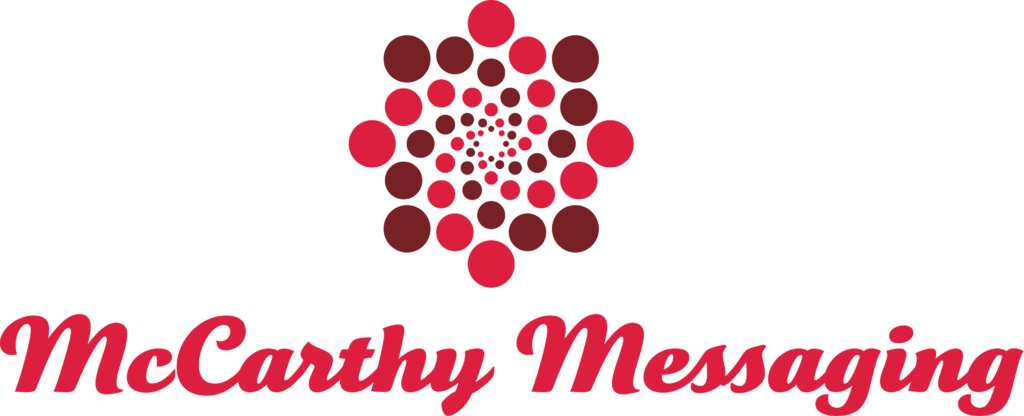The seismic shifts brought on by COVID-19 are spurring your company to innovate, automate and elevate so that you won’t get lost in a volatile marketplace. You need to be firing on all cylinders. Inertia and indecision are your enemies. Rework weighs you down.
But if your messaging is all over the place, your employees will be too. And that’s never good for business.
Now more than ever, you need a team that operates as one well-oiled machine. Message discipline can get you there.
A message platform brings discipline to your communications
A message platform is a concise, laser-focused document that articulates the most important ideas you want key audiences to consistently hear, believe and internalize about your business.
Your message platform is a powerful tool to create the alignment your company needs and your people crave. Why? Because it spells out the high-level messages of your organization, strategy or product. It becomes the North Star that guides executives, spokespeople, operations and sales teams towards a shared vision of success.
Creating one is hard work, but hard work pays off. Once you establish and express a clear, consistent story, you’ll see immediate benefits:
- Shared vision. Everyone across the company embraces the same picture of where the organization is going and what success looks like. A common purpose energizes employees and helps them decipher business decisions while giving meaning to their own day-to-day work.
- Orchestrated effort. Teams and individuals rally around the same priorities, with resources and accountability lined up accordingly. Effort is focused rather than scattershot. Everyone pulls hard in the same direction.
- Powerful presence. Customers, prospects and other stakeholders hear the same, clear message about who you are, what you do and what makes you different. Customers remember you, know what to expect and believe in your ability to deliver.
The science behind a disciplined message platform
It’s common knowledge among communicators, educators and behavioral change experts that human beings remember very little. “Forgetting curve” studies show that in the first few days after exposure to information, people forget most of it, even up to 90 percent.[1]
And the news gets worse: The little that people do remember, they remember at random.
Imagine you’re speaking with a group of 10 people on Zoom. A few days go by and you ask each person what they recall from your conversation. Responses will vary—wildly.
Now, reimagine that same conversation. The only difference is that this time, you direct people to a few key ideas: “There are 3 things you should know…” When you later ask people about their takeaways, the responses will be far more consistent.
A message platform has the same effect. It helps you illuminate a few, top-priority messages that educate your employees, customers and other audiences on how to engage with your organization or product. A much better plan than letting them figure it out on their own.
A message platform offers fewer messages, more often
Developing a message platform is an exercise in restraint. Once you land on the most essential truths about your organization, strategy or offering—and let go of the rest—you put those big ideas on repeat.
Whether you’re trying to prompt behavior change in employees or get customers to move along the continuum from noticing you to buying from you, a message heard repeatedly is more likely to make its way into the receiver’s long-term memory.[2]
But scientific studies have shown another striking benefit of repetition: When you deliver statements frequently, people perceive them as more truthful than statements made less frequently.[3]
Consistent delivery of the same message makes it more likely to be absorbed and believed.
Maintain message discipline for the long term
A “fewer messages, more often” approach starts with a message platform. But it doesn’t stop there. Message discipline requires care and feeding:
- Teach it. Show key stakeholders across the organization how to adopt and adapt your message platform. Train them to showcase messages in both formal communications and informal interactions.
- Live it. Your message platform should guide action as well as communications. Keep the platform in front of leadership and other internal decision-makers to shape how they prioritize efforts, allot resources, craft policies and invest in new programs.
A sharp, disciplined message platform moves your audiences from confusion to clarity. It transforms your business from sluggish to speedy, as individual efforts coalesce into collective clout. And it helps you register in the minds and memories of your customers, setting you apart from the competition. When you have the discipline to create and repeat your message, your message has greater power.
Margie McCarthy is founder of McCarthy Messaging, a strategic messaging firm based in Denver, Colorado. She’s fond of messy challenges, brave clients and vintage jewelry.
[1] Hermann Ebbinghaus, “Memory: A Contribution to Experimental Psychology.” 1885/1913. (http://psychclassics.yorku.ca/Ebbinghaus/index.htm); Jaap M.J. Jurre and Joeri Dros, “Replication and Analysis of Ebbinghaus’ Forgetting Curve.” PLOS ONE, July 6, 2015. (https://journals.plos.org/plosone/article?id=10.1371/journal.pone.0120644)
[2] Endel Tulving and Fergus I. M. Craik, “The Oxford Handbook of Memory.” Oxford University Press, USA, 2000.
[3] Lynn Hasher, David Goldstein and Thomas Toppino, “Frequency and the Conference of Referential Validity.” Journal of Verbal Learning and Verbal Behavior, 16, 107-112, 1977. (http://www2.psych.utoronto.ca/users/hasher/PDF/Frequency%20and%20the%20conference%20Hasher%20et%20al%201977.pdf)
We promise: Your strategy session will NOT be a sales pitch. And because we know your time is valuable: If you don’t leave our conversation with one new idea (or if you feel like we’re selling you), we’ll donate $100 to the charity of your choice.
